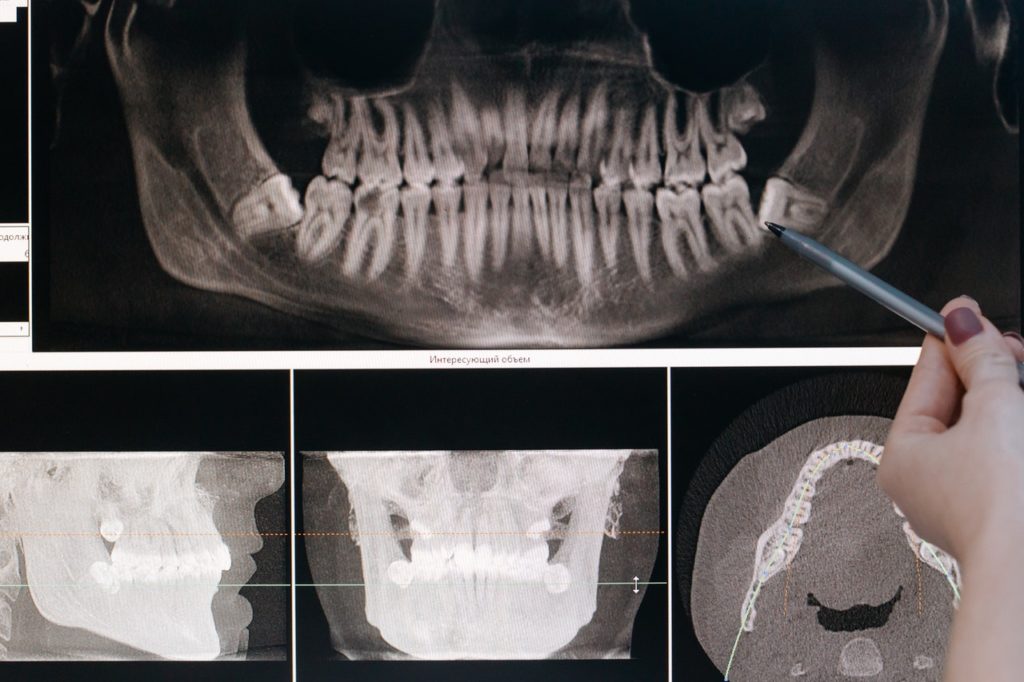
I learned this today. There is evidence of a dentist from 12,000 BC.
Before humans took up agriculture, possibly about 12,000 years ago, we were hunter-gatherers and we had less tooth decay than when we became farmers. Researchers were able to extract dental plaque from the teeth of 34 prehistoric European skeletons. Dental plaque is an accessible source of preserved human bacteria. They found that when humans switched from a largely meat diet to a diet high in grains and wheat, they developed more tooth decay. Hunter-gatherers had a cavity rate of about 5%, while agricultural societies have a cavity rate of up to 85% sometimes.
There were possibly two reasons for this. Firstly, there are more carbohydrate sugars in wheat and grains than there are in meat. Secondly, hunter-gatherers tended to have a greater diversity of bacteria. More bacteria meant their mouths were more resilient and they were less likely to get tooth decay. The number of bacteria could have been connected to the meat they were eating, which wouldn’t always be fresh. Their mouths would have to cope with this meat in a similar way to a vulture’s stomach.
When we turned to agriculture, we started to get more tooth decay and the trade of “dentist” began.
A tooth found in Italy that is between 13,820 and 14,160 years old, shows signs of having been cleaned with flint tools. This could be the first dentistry. There have been 130,000-year-old neanderthal teeth found with marks on them that seem to show that the individual was trying to remove their own teeth because of pain, but this isn’t necessarily dentistry. Dentistry would imply someone trying to fix someone else’s teeth.
Evidence found in the Indus valley shows that in 7,000 BC teeth were being drilled with a bow drill. This would have been unimaginably painful, but effective. Dental fillings made of beeswax have been found in Slovenia from 6,500 years ago.
The topic of dentistry was first written about thousands of years ago and many ancient documents list cures for toothache, infections, and loose teeth. A Sumerian text suggested that cavities were caused by a tooth worm. This belief actually survived well into the 14th century. Hippocrates and Aristotle both wrote about dentistry.
Hesy-Ra, from Ancient Egypt, who lived between 2686 and 2648 BC, was known as “Great one of the dentists”, which makes him the world’s first named dentist. (Although, the title could also be translated as “ivory -cutter”, so he might be a dentist, but he might also be a very skilled ivory artist).
Advances in dentistry and dental techniques continued through the Middle Ages. China and Islamic countries made a lot of advances. China invented metal fillings and Al-Zahrawi invented some techniques and tools that are still used today. However, throughout all of this time, dentistry was not a profession and in Europe, most barbers also worked as “dentists”.
The French surgeon Pierre Fauchard is known as the “father of modern dentistry”. He was a skilled surgeon who created many tools, invented dental prosthetics, worked out that teeth could be corrected using wire, and perfected dental fillings. However, more important than that, he suggested that acids from sugars were responsible for tooth decay. There was an increase in tooth decay at this time as the consumption of sugar started to rise and people’s diets changed as Europe industrialized.
The study of dentistry exploded from here. People were eating more sugar, (the amount of sugar consumed jumped from a few hundred grams a year in 1710 to 8kg a year by 1820), and there were more dental problems, which created a demand. The dental profession arose to fill this demand.
Dentistry became a profession at the start of the 19th century and the first dental school opened in 1840 in Baltimore. The American Dental Association was founded in 1859 and the first dental x-ray was taken in 1896.
One of the most important medical advances that helped dentistry was the discovery of anesthesia in 1905. It was a lot easier to have work done on your teeth if you couldn’t feel the pain. The high-speed drill was invented in 1957, which improved accuracy and increased the ability to remove cavities. In the 1990s, cosmetic dentistry took off, and that is where we are today.
As an interesting extra, the first toothbrush, well, chew stick, was found in Sumer from 3,500 BC. The first bristle toothbrush was invented in China in 619 AD. It used hog bristles.
So, tooth extractions and basic dentistry has been performed for over 13,000 years. Dentistry slowly improved over the millennia, with lots of inventions and research. Modern dentistry began in the 18th century when the increasing consumption of sugar created a need for the profession and it became a profession in the start of the 19th century. And this is what I learned today.
Photo by cottonbro from Pexels
Sources
https://en.wikipedia.org/wiki/Toothbrush
https://www.dentalcareersedu.org/2017/02/why-prehistoric-humans-had-better-teeth/
https://en.wikipedia.org/wiki/Dentistry
https://www.adea.org/GoDental/Health_Professions_Advisors/History_of_Dentistry.aspx
https://en.wikipedia.org/wiki/Hesy-Ra
